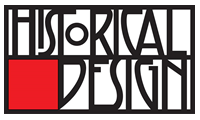Product Description
Christian Thomsen / RC Denmark Rare “Frog and Dragonfly” Art Nouveau vase 1901


CHRISTIAN THOMSEN (1860-1921) Denmark
ROYAL COPENHAGEN
“Frog and Dragonfly” vase 1901
Glazed porcelain with a frog in 3-D sculptural relief looking at a dragonfly seated on a calla lily leaf looking up at the blossom.
Form number 280
Marks: ROYAL COPENHAGEN, CROWN, 465/250, 3 wavy lines (Royal Copenhagen) insignia, inscribed A. 250
For more information see: Musterbuch KPF, um 1930, Illustration number 204; Porzellan, Kunst und Design 1889 bis 1939, vom Jugendstil zum Funktionalismus (Berlin: Bröhan-Museum, 1993) p. 467, ill. 435; Sammlung Bröhan: Kunsthandwerk 2, Metall, Porzellan (Berlin: Bröhan Museum, 1977), pp. 222-285.
H: 9″ x Dia: 3 1/2″
Christian Thomsen was employed at the Royal Porcelain Manufactory (Royal Copenhagen) in 1898, and was employed there until his death in 1921. Thomsen is said to have had a huge impact on Royal Copenhagen’s success throughout the 20th century. A large part of the recognition by the Royal Porcelain Factory has enjoyed over the years, they can thank Christian Thomsen for. He produced more than 100 different figurines, especially he had a fondness for agricultural characters, children figurines, figurines inspired by Hans Christian Andersen’s fairy tales, fauns and trolls, and not least charming animals and bird figures.
Christian Thomsen / RC Denmark Rare “Frog and Dragonfly” Art Nouveau vase 1901
WERNER MANTZ (1901-1983) Germany
Untitled 1929 (vintage)
Silver gelatin print, patinated bronze frame
Signed: W. Mantz 1929 (in pencil on back)
Framed size: H: 8 ¾” x W: 11”
Price: $42,500
Werner Mantz is regarded as one of the most gifted architectural photographers of the twentieth century. His talent in this field we recognized early in his career and he received numerous commissions from a variety of prominent architects, first in Germany and later in the Netherlands. His work in Cologne especially, from the mid-1920s to the early 1930s, forms a definitive statement of the Neue Sachlichkeit movement in architecture.
Works by Werner Mantz can be found in the collections of the Metropolitan Museum of Art in New York, The Museum of Modern Art in New York, The Art Institute of Chicago, Tate London and many more.
